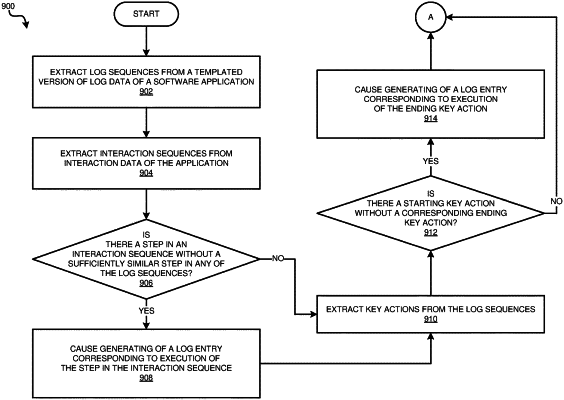| CPC G06F 11/2268 (2013.01) [G06F 11/3495 (2013.01)] | 20 Claims |

|
1. A computer-implemented method comprising:
extracting, from log data of a software application, a set of log sequences, a log sequence in the set of log sequences comprising a group of events that occur in order more than a threshold number of times in the log data;
extracting, from interaction data of a plurality of modules of the software application, an interaction sequence;
causing generation of, responsive to determining that a step in the interaction sequence has below a threshold similarity to any step in the set of log sequences, using the step in the interaction sequence and a trained text generation model, a first log entry, the first log entry emitted responsive to execution of the step in the interaction sequence by the software application;
extracting, from the set of log sequences, a set of key actions, a key action in the set of key actions comprising a logged event with a status;
causing generation of, responsive to determining that a starting key action in the set of key actions lacks a corresponding ending key action, a second log entry, the second log entry emitted responsive to execution of code related to the corresponding ending key action by the software application;
recording, during execution of the software application with an injected fault, fault log data of the software application; and
causing generating of, responsive to determining, using a trained anomaly detection model, that a keyword related to the injected fault is not present in the fault log data, a third log entry, the third log entry emitted responsive to execution of code related to the keyword by the software application.
|